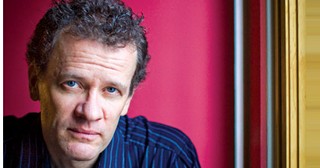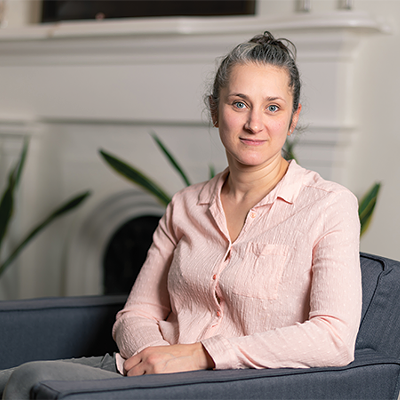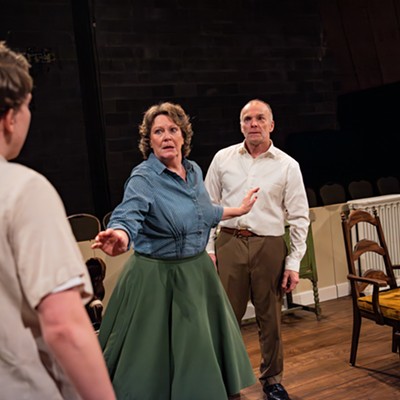On April Fool's Day, Yann Martel and I played phone tag. After punching in the 15-digit phone number, the answering machine of a London publishing company picked up several times over. I thought the joke was on me. Finally, we connected.
Days before he begins his North American book tour, Martel is in England with his partner and their eight-month-old, Theo, introducing the little one to his grandparents for the first time. His latest novel, Beatrice & Virgil, hits bookstores this week. The meta-fictional story opens up dialogue around the Holocaust.
"To study history is to study ourselves. Especially if we study it through that part of ourselves that understands through the imagination," says Martel. "History, in other words, is a mirror. It's important to look at the unflattering parts of ourselves, the parts that caused the Holocaust, so that we might know ourselves better, our potential for evil.
"Religion encourages speech. The Holocaust shuts you up. Only two percent of Holocaust survivors have testified to what they've lived through. Ninety-eight percent who suffered never wrote about it, never spoke about it."
The novel's protagonist, Henry, a writer, questions the meaning of life, art and his relationship to the universe. He abandons his work---a flipbook that thematically explores representations of the Holocaust---and moves to a foreign city, working as a chocolatier. A local playwright seeks out Henry for help, as both writers involve animals as characters in their work. Meet Beatrice and Virgil, a stuffed donkey and howler monkey, who carry the novel from its simple beginnings of one man's defeat to the defeat of humanity.
"The Holocaust has been boxed in, it's been historicized," says Martel. "It needs to be opened up. We see it as concentrated as the concentration camps. We see Hitler at his greatest power; we never talk about when he was wandering around Europe as this broken ordinary man.
"We need to see the Holocaust in a more scattered way. I think it can teach us a lesson, the single lesson of the Holocaust is radical tolerance."
With several books to his name, including The Facts behind the Helsinki Roccamatios and other stories (1993), Life of Pi (2002), We Ate the Children Last (2004) and What is Stephen Harper Reading? (2009), Martel entertains the idea of a children's book, though true pleasure is reading to his son.
"Life of Pi is much more famous than I am," says Martel, who brushes off any commentary around his internationally acclaimed Booker Prize-winning novel. "The novel is the greatest role of our representation of reality. It gives you the texture and feel of life. A great novel is a reality that is not yours. It's what it is to feel."
Much like his colloquial writing style, Martel is moving and approachable. He interrupts his own thoughts: "Did you know the word suburb was created for London?"
Martel doesn't romanticize his work, describing the practice of writing as "remarkably dull." He does so purely because it is deeply satisfying to be creative. "With Life of Pi, for example, my office became a lifeboat for four years and in it lived a tiger whom I had to keep alive," Martel says. "There's nothing more joyful than a life of the creative mind. Each one of us, in whatever we do, has to try to increase their creative input in what they do. Otherwise, the spirit dies and we become drones."
















